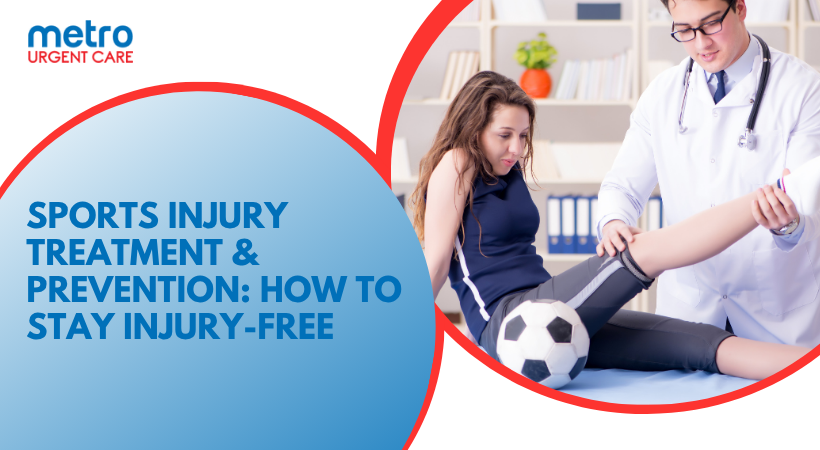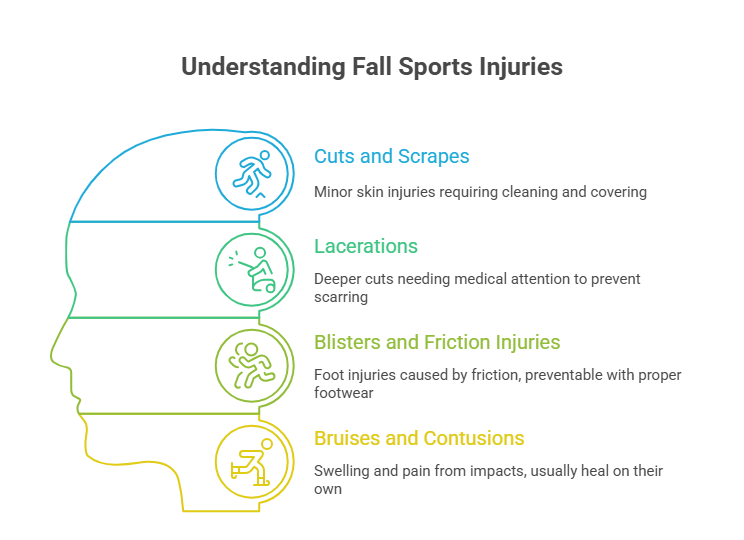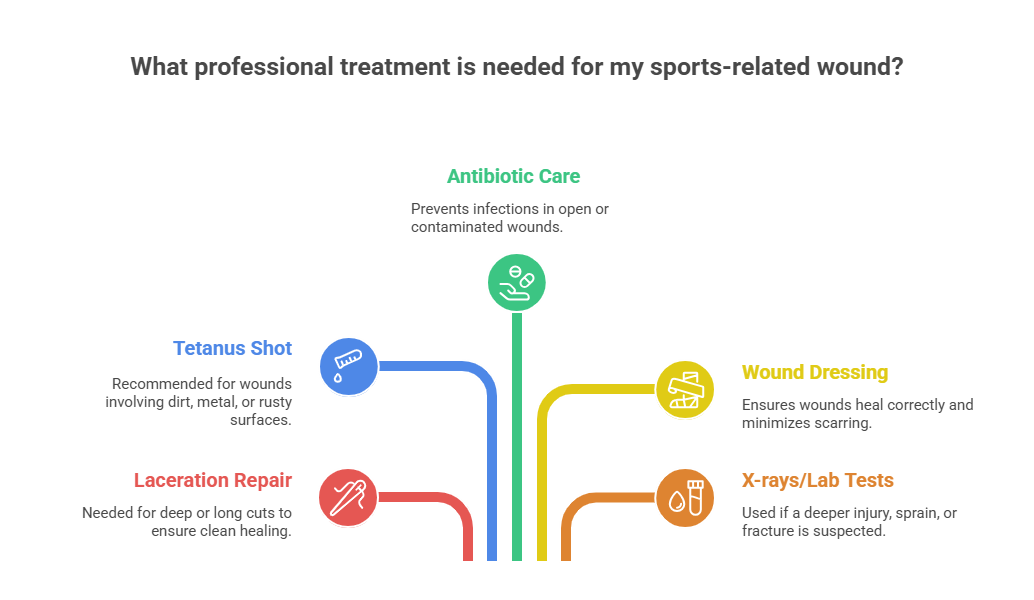


Fall sports are back in full swing across Chicago, football, soccer, hockey, and even marathon training are keeping athletes of all ages busy. The excitement of competition and fitness brings plenty of rewards, but it also raises the risk of sports-related wounds and injuries.
A slip on wet turf, a hard tackle, or the wrong landing can easily lead to cuts, bruises, or sprains. Knowing how to prevent, treat, and respond to these injuries helps you stay active, recover faster, and protect your long-term health.
This season, a few simple habits and quick responses can make all the difference in your recovery.
Even with the best conditioning, injuries can happen anytime. Recognizing them early and taking prompt action makes recovery faster and easier.
Turf burns and surface abrasions are common in soccer, football, and field hockey. These may look minor, but without proper cleaning, they can become infected. Wash thoroughly, apply antiseptic, and keep the area covered.
Collisions, cleats, or sharp edges can cause deeper cuts that may need urgent care for athletes. Stitches or medical wound care help prevent scarring and infection.
Tight footwear, sweaty socks, and repetitive motion can lead to blisters, especially among runners. Always wear moisture-wicking socks and properly fitted shoes to reduce friction.
Falls and tackles often cause bruising and mild swelling. While most heal on their own, persistent pain could indicate a deeper muscle or bone injury that needs evaluation.

Prevention is always better than recovery. A few careful habits can protect you before injuries even happen.
Always wear sport-specific gear, helmets, pads, gloves, and footwear designed for your activity. Quality equipment absorbs impact and prevents most contact-related injuries.
Start every session with light movement and stretching. This improves flexibility, boosts circulation, and reduces the risk of strains and falls.
Avoid risky tackles or unnecessary contact. Respecting game rules and focusing on good form minimizes avoidable accidents.
Healthy, hydrated skin resists tearing and friction better. Use moisturizer regularly and drink water before, during, and after play.
Quick action after an injury can prevent complications and speed healing.
Gently rinse wounds with clean water, apply antiseptic, and cover with a sterile bandage. Avoid harsh chemicals like alcohol that can damage skin tissue.
For bruises or swelling, use ice packs wrapped in a towel for 15–20 minutes. Light compression can reduce inflammation and improve comfort.
If a wound becomes red, swollen, or develops pus, or if you develop a fever, it may be infected. Seek medical attention right away.
Over-the-counter pain relievers can help manage soreness or swelling. Follow dosage guidelines and never overuse them to mask serious pain.
Some injuries need more than first aid. Visiting a sports injury urgent care center ensures you receive expert treatment and avoid complications.

Sometimes, self-care isn’t enough. Knowing when to visit urgent care for sports injuries can make a huge difference in your recovery.
Staying active and injury-free this season comes down to preparation, prevention, and prompt care. The sooner you treat a wound or strain, the faster your body can recover. Ignoring pain or delaying treatment can lead to longer recovery times or chronic issues later.
Take care of your body the same way you train, with discipline, consistency, and attention. A small step today can protect your performance for the rest of the season.
At Metro Urgent Care, our experienced medical team treats athletes of all ages for sprains, bruises, lacerations, and other sports-related wounds. We offer quick, effective sports injury treatment so you can get back to doing what you love, safely and confidently.
Contact us today for same-day sports injury care and get back in the game stronger than ever.
Cuts, scrapes, bruises, blisters, and minor sprains are the most common injuries, especially in football, soccer, running, and contact-based fall sports.
Wear proper protective gear, warm up before activity, follow safe techniques, stay hydrated, and maintain healthy skin to reduce the risk of injuries.
Clean wounds with water, apply antiseptic, cover with a sterile bandage, use ice for swelling, and monitor for signs of infection.
Seek care for deep cuts, heavy bleeding, persistent pain, swelling, suspected fractures, or signs of infection that don’t improve with home care.
Encourage warm-ups, hydration, protective gear, regular check-ups, and proper rest while monitoring for injuries to ensure safe, active participation.